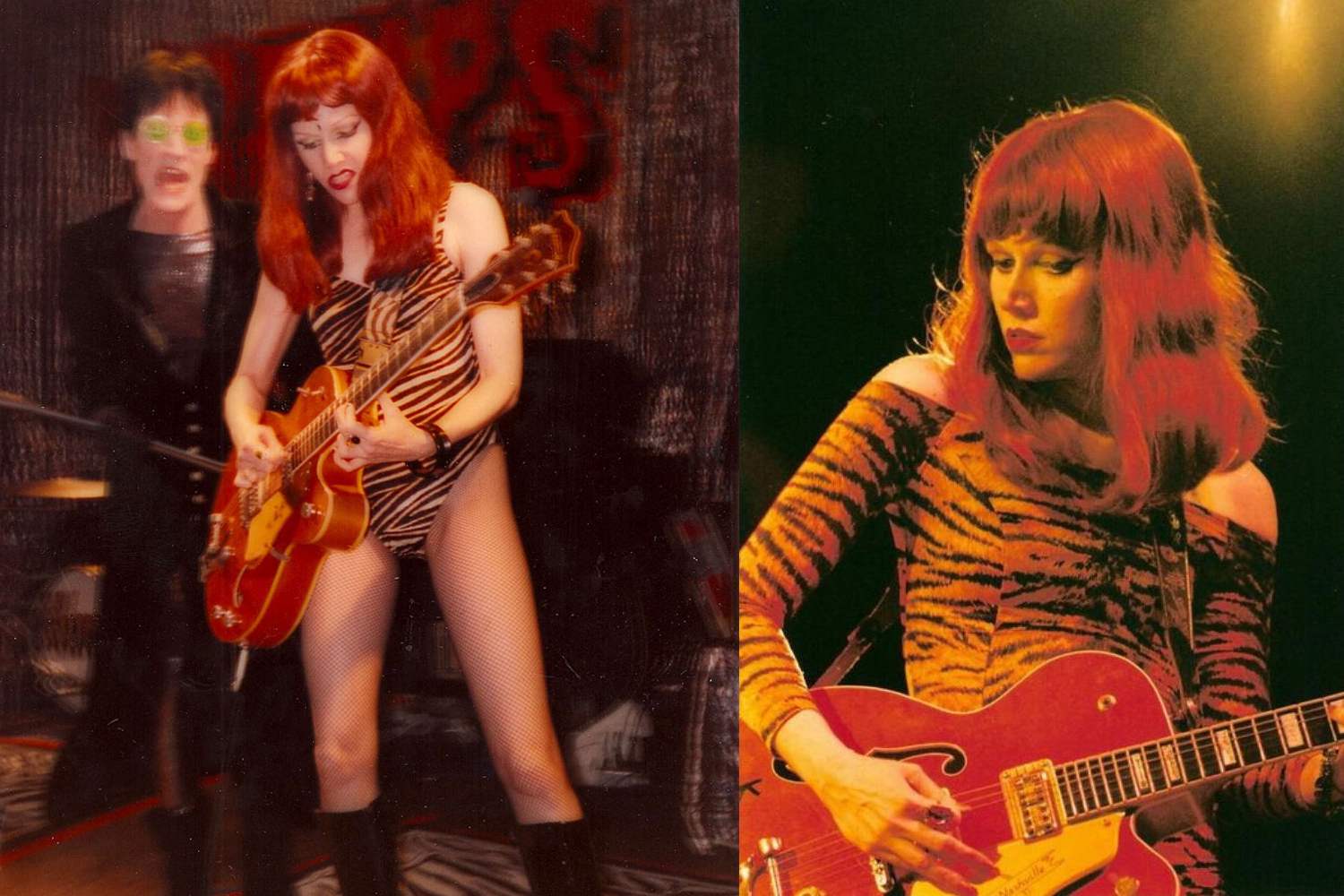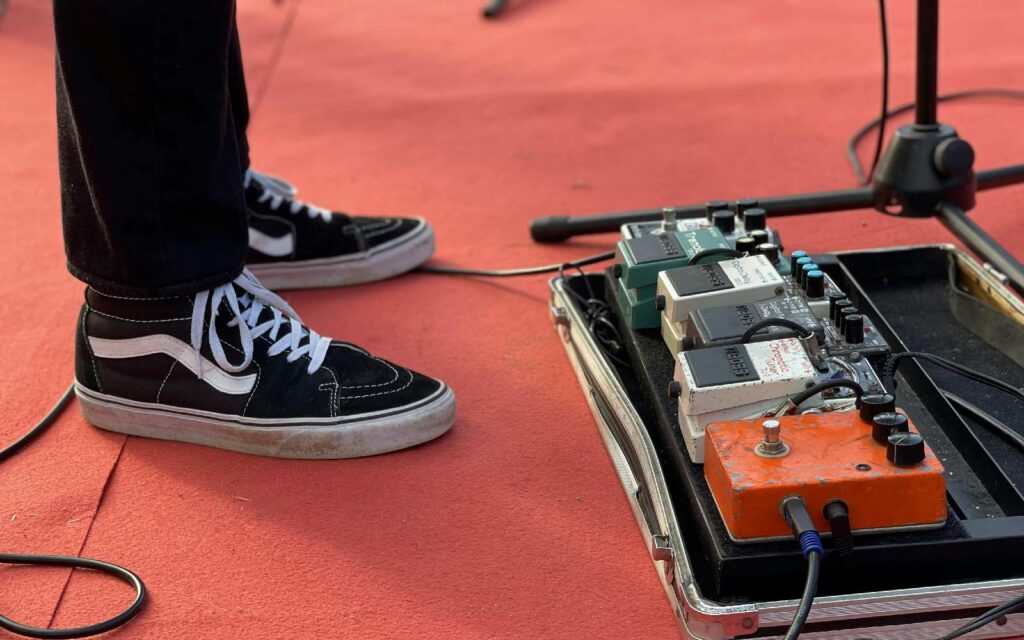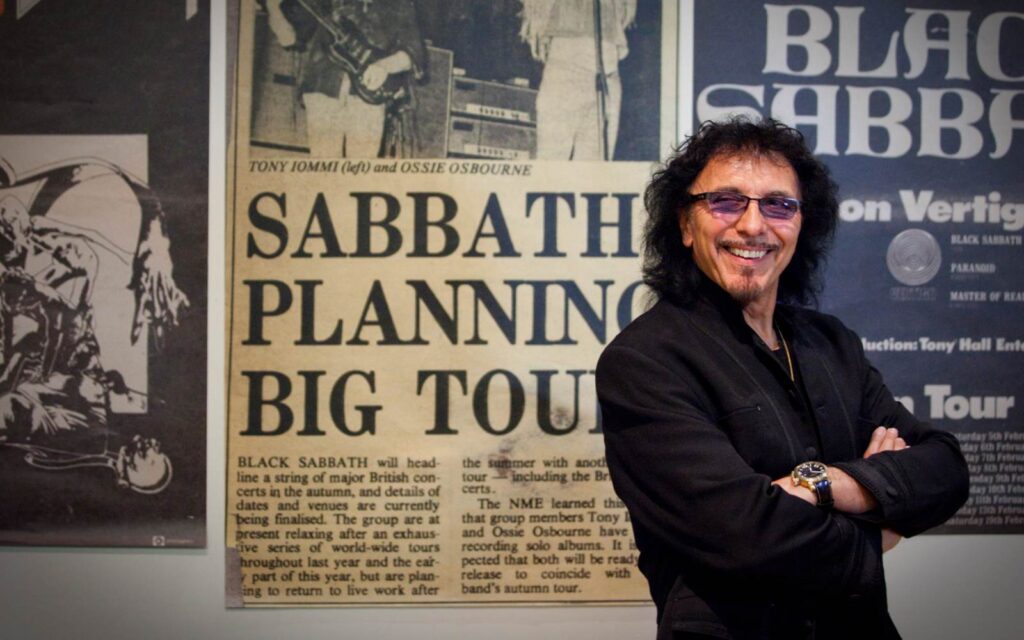The gear behind one of the coolest performers in history- Poison Ivy, the co-founder of The Cramps.
Poison Ivy is not only one of the coolest performers in history, she’s the co-founder of The Cramps, as well as a guitarist, songwriter, arranger, producer.
Poison Ivy The Cramps
Read up on all the latest features and columns here.
1972 saw Poison Ivy meet Erick Lee Purkhiser a.k.a. Lux Interior, and the two would go on to begin performing as The Cramps from the mid 70s. The Cramps’ unique style that moved through punk and rockabilly seamlessly saw Ivy using equally unique instruments to coax the simple, albeit effective, sounds from her hands onto various records until the band officially ended in 2006. Poison Ivy is most synonymous with a big ol’ Gretsch, but the 70s and early 80s saw her using various instruments as her and Lux began to shape what would become The Cramps, informing post-punk, psychobilly and rockabilly bands to come.
Early years
The start of The Cramps had Ivy playing unique instruments that fit the bill for their new brand of minimalism amongst the emerging punk scene. Pictured very early on with a plexiglass Dan Armstrong solid body electric, the brittle, bright nature of Poison Ivy’s sound was there from the start. The only noticeable absence being a tremolo bar that would help shape the Cramps’ take on punk and rockabilly, the Dan Armstrong featured a single humbucker in the bridge position.
Punk music was using increasingly distorted amps that were pushed to breakup to achieve distortion, and the punchy sound of the Armstrong’s humbucker helped round out Ivy’s tone.
She then moved onto more unique solid body electrics, with wood bodies this time, made by Bill Lewis. A double cutaway design with two humbuckers and the addition of Bigsby-like vibrato bars helped The Cramps evolve. While other punk bands found their sound in solid bodied electrics like Mosrites, Les Pauls and Fender Esquires, Ivy looked backwards to her heroes and found her way to hollow-bodied electrics.
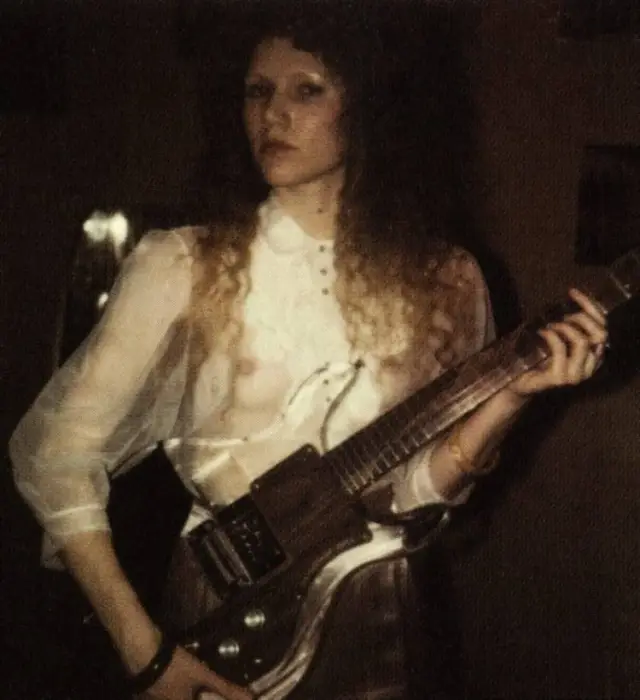
Gretsch onwards
A riot after a show in Paris saw the headstock of one of the Lewis guitars break, and the replacement, an orange 1958 Gretsch 6120, would become Ivy’s mainstay until the modern day. The Gretsch 6120 is a hollow-body electric made famous by players like Chet Atkins, Eddie Cochran and Duane Eddy, all huge influences on Poison Ivy herself. The Bigsby vibrato, hollow body and dual humbuckers all contribute to Ivy’s iconic sound, as well as the age of the guitar providing a unique resonance as the wood had had decades to open up and re-settle; a common and thread amongst more coveted vintage acoustic and hollow body guitars. While the original ‘58, with the cattle-brand style “G” etched into its body, would remain as Ivy’s main squeeze, a more modern re-issue Gretsch Nashville would serve as a spare, though Ivy’s choice of .11-.49 gauge strings rarely broke, despite an aggressive picking hand being a staple of her sound as much as any of the gear. The Nashville is for all intents and purposes a Chet Atkins signature model, renamed when Chet moved to Gibson for a short time.
Ivy can be seen with variants of the 6120, here and there with a sunburst model, though the distinct orange stain of main ‘58 became tied heavily to her image.
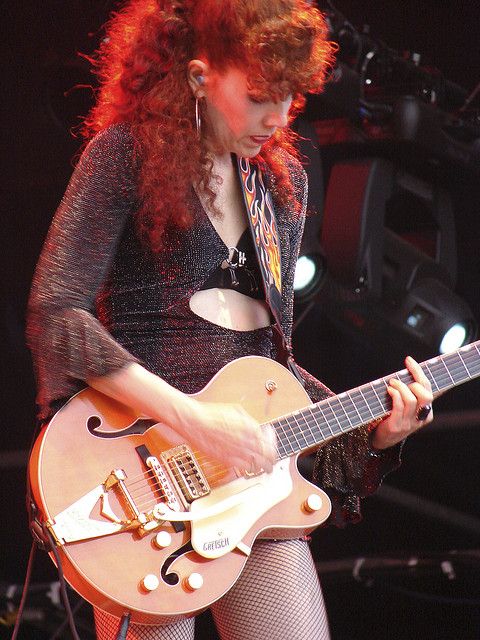
Amps and Pedals – Sound
Guitars aside, Ivy amplified her sound primarily through Fender Pro Reverbs with various speaker configurations. She preferred the black-panelled era models, as they broke up easier than their future counterparts that had a silver control panel. This allowed Ivy, with the assistance of various fuzzes throughout her career, to achieve a distorted and forward sound. Pedals like a Univox fuzz were used for thick, gritty tones, while a Maxon delay were used for slapback, securing The Cramps’ firmly to their rock ‘n’ roll roots. In addition to fuzz and slapback, as well as the tremolo bar adorning the 6120, Ivy used a Fulltone tremolo pedal for volume modulation, often at extreme settings for The Cramps extreme sounds. This applied to the studio as well, though Ivy preferred various, smaller Valco and Allen amps for the records. They recorded better, while the Fender Pro Reverbs were reliable for live use, being both roadworthy and more widely available internationally.
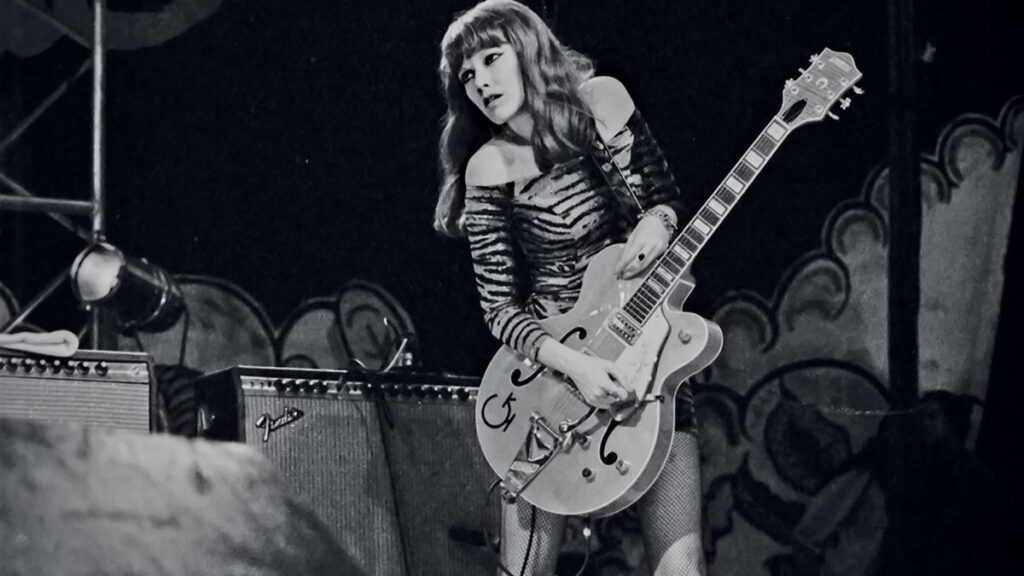
Poison Ivy pushes the boundaries of guitar while remaining firmly rooted in rock ‘n’ roll. Rarely seen without her 6120 strung across her shoulder, she took what we’d learnt from early rock and moulded it into a new sound for the emerging punk scene, before The Cramps themselves pushed rockabilly and punk to new heights— or maybe new depths is more fitting for an early pioneer of psychobilly!
Always one to walk her own path, Ivy began on uncommon solid bodies like Dan Armstrong and Bill Lewis electrics and eventually found her way to a 1958 Gretsch 6120 that would stay with her throughout her career. She amplified this through some tried and true effects, the combination of which shaped the sound she used to inspire so many. There’s a lot to be said about someone who managed to be such a moniker of expression and uniqueness while primarily playing a guitar through a loud amp. Despite using a few pedals, Ivy’s sound was defined by not much else than her tenacity, creativity and unique take on electric guitar.
Read about the recent resurgence of The Cramps’ ‘Goo Goo Muck’ here.
